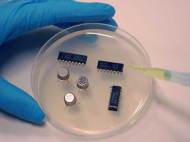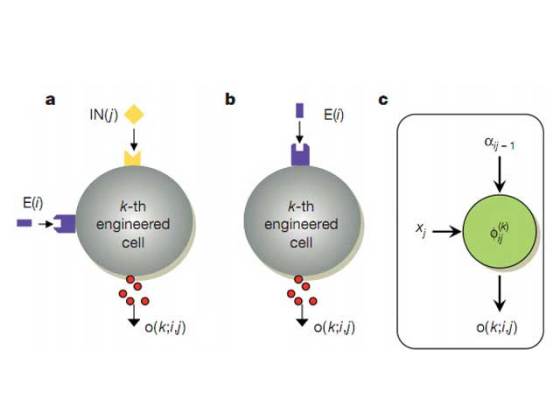Genetically modified yeast cells could be used as biological computers
 Synthetic biology is a relatively new area of research that combines biology and technology. Genetically modified cells can be altered in order to communicate with each other as if they were electronic circuits. A group of researchers in Gothenburg has managed to alter yeast cells in to build complex systems that could help the body’s own cells to keep us healthy.
Synthetic biology is a relatively new area of research that combines biology and technology. Genetically modified cells can be altered in order to communicate with each other as if they were electronic circuits. A group of researchers in Gothenburg has managed to alter yeast cells in to build complex systems that could help the body’s own cells to keep us healthy.
“Even though engineered cells can’t do the same job as a real computer, our study paves the way for building complex constructions from these cells”, said Kentaro Furukawa, one of the researchers on the project from the University of Gothenburg’s Department of Cell- and Molecular Biology. “In the future we expect that it will be possible to use similar cell-to-cell communication systems in the human body to detect changes in the state of health, to help fight illness at an early stage, or to act as biosensors to detect pollutants in connection with our ability to break down toxic substances in the environment.”
By using yeast cells, the researchers have produced synthetic circuits based on gene-regulated communication between cells. The yeast cells have been modified genetically, enabling them to sense their surroundings on the basis of set criteria and then send signals to other yeast cells by secreting molecules. Piling and combining a construction of yeast cells with different genetic modifications allows more complicated “electronic” functions that could be carried out.
One application is the design of biological systems that are not found in nature. For example, researchers have successfully constructed a number of different artificial connections within genetically modified cells, such as circuit breakers, oscillators and sensors.
Some of these artificial networks could be used for industrial or medical applications. Despite the huge potential for these artificial connections, there have been many technical limitations to date, mainly because the artificial systems in individual cells rarely work as expected, which has a major impact on the results. We’re going to write about a potential solution to this problem in one of our future articles.
For more information, read their article published in the scientific journal Nature named: “Distributed biological computation with multicellular engineered networks”.










Leave your response!